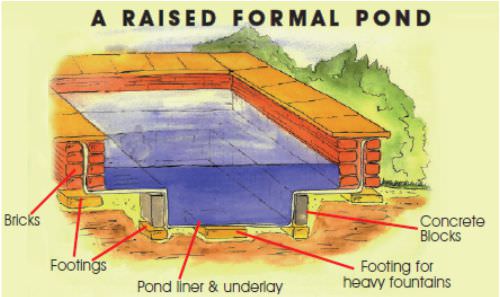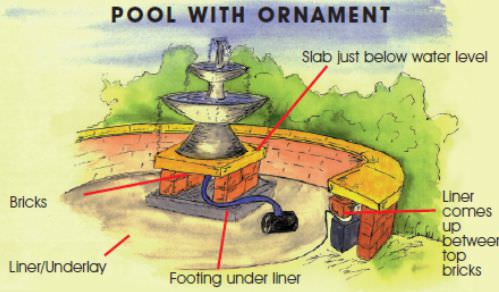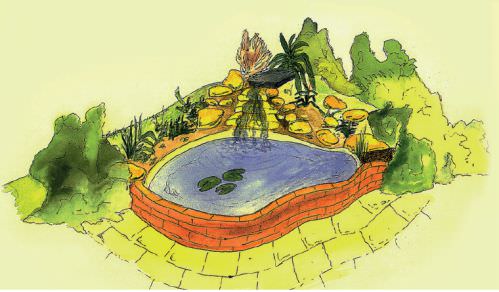Raised ponds can be either completely above ground or only partially raised. Partially raised ponds are more suitable for fish as they keep the temperature of the water more stable, particularly during the winter months.
Raised ponds often look particularly effective in formal gardens and have the added benefit of reducing the amount of excavation required and the quantity of soil needing to be removed from the site. Another important benefit is the safety factor provided by a raised pond when considering children and wheelchair users, as well as making the pool more accessible and workable for all.
Additional areas of consideration when planning a raised pond include adequate strength of construction of the walls and concealing a suitable filtration system. This is easier if the pond is only raised on three sides and soil is banked behind on the other, allowing scope for a waterfall flowing from the outlet of the filter.
Alternatively, consider a pressurised filter, which can be hidden in a chamber next to the pond or an “in pool” filter, which are available for smaller ponds.
Tips for Raised Ponds:
Ensure the walls will support the weight of the pool.
Sandwich the liner between the last courses of bricks and up the cavity, this will hide the liner.
Concrete blocks maybe used to form and shape planting shelves
Heavy fountains will need additional footings under the pool liner.
Careful measurements will be required to ensure the pool is square.



 British Pounds
British Pounds
